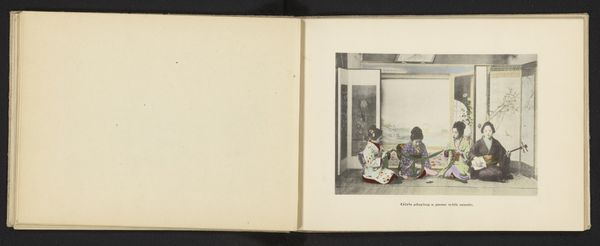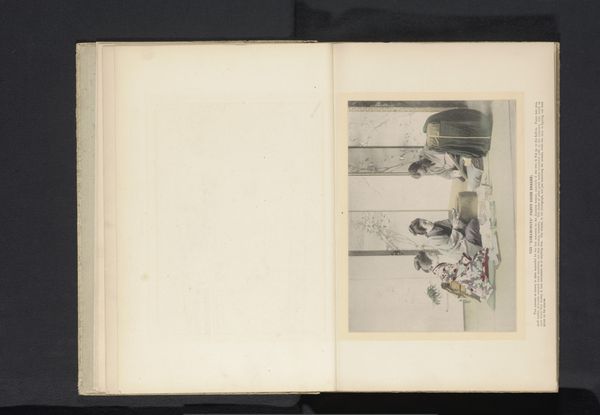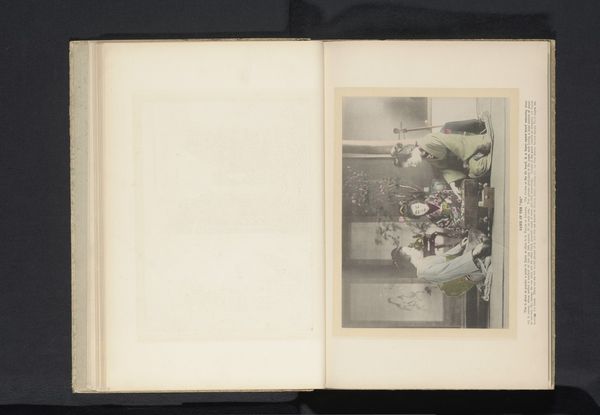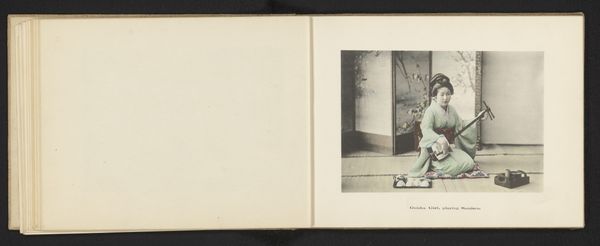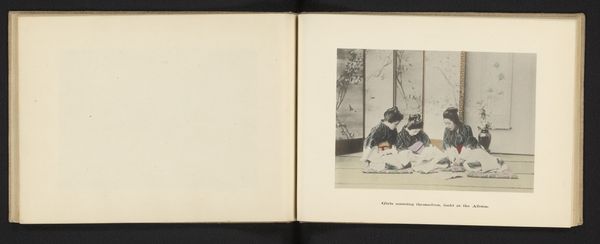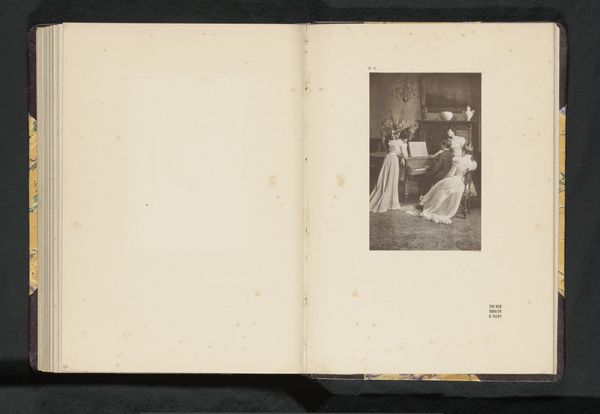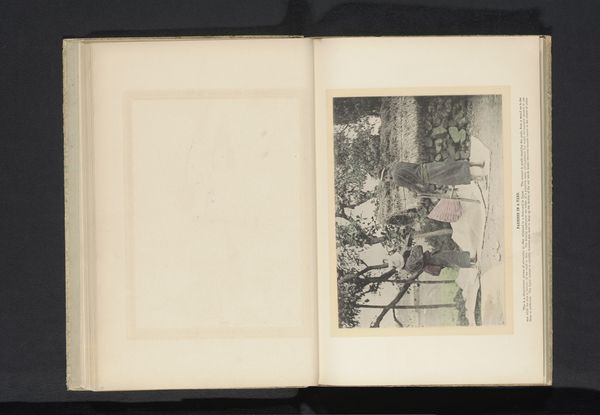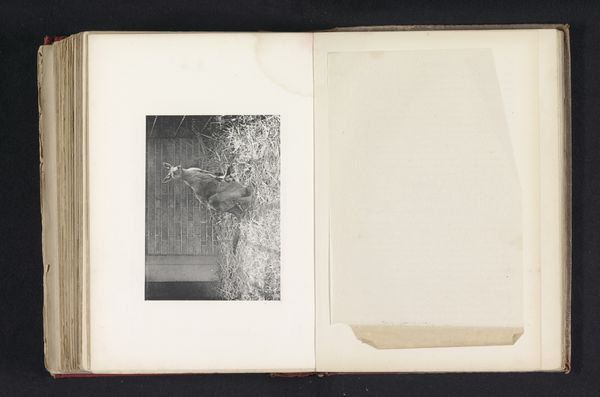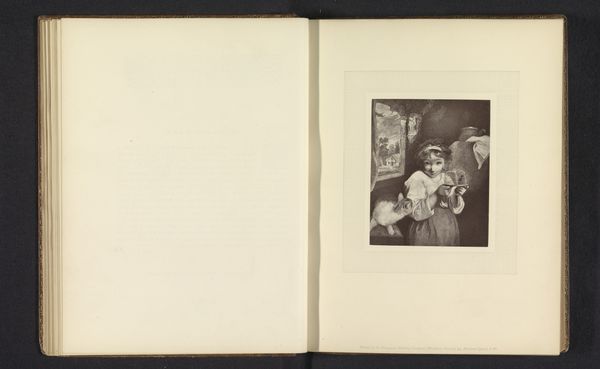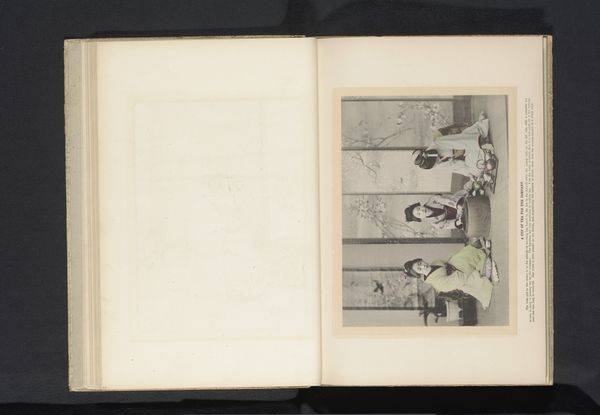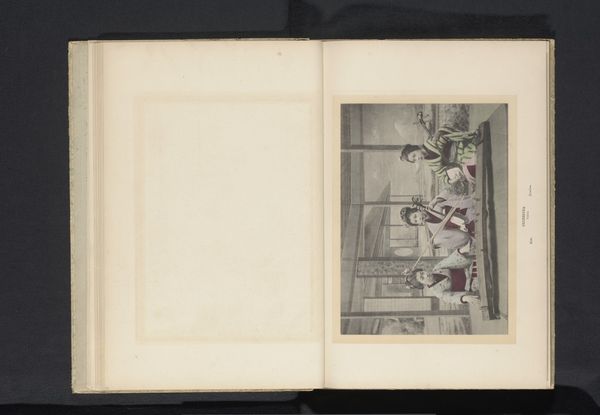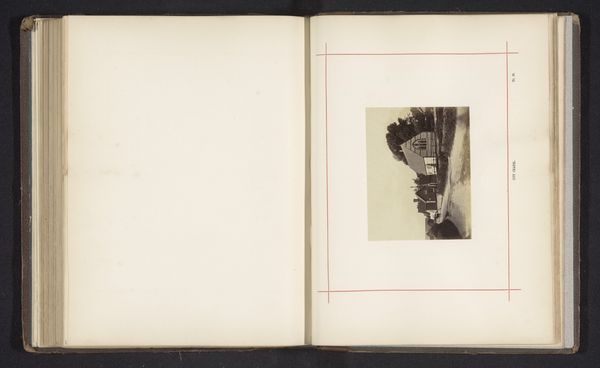
albumen-print, photography
#
albumen-print
#
portrait
#
photography
Dimensions: height 105 mm, width 151 mm
Copyright: Rijks Museum: Open Domain
Editor: So this is a hand-tinted albumen print, taken by Kōzaburō Tamamura, probably between 1895 and 1905. It depicts a woman in traditional Japanese dress playing a koto. There's a kind of quiet intimacy to it. What jumps out at you about this piece? Curator: Immediately, the artificiality grabs my attention. The photograph imitates Ukiyo-e prints but uses a very different production method. We have to consider the consumption of images of Japan by Western audiences. What does hand-tinting on albumen paper, as opposed to traditional woodblock printing, tell us about the market for this image and its social circulation? Editor: That's interesting, I hadn't thought about the market forces at play here. So it's less about an authentic representation and more about crafting an image for Western tastes? Curator: Precisely. Albumen prints were mass-produced and relatively inexpensive. The hand-tinting, a later addition, would increase its appeal and, critically, its perceived value to consumers who likely sought an ‘exotic’ Japanese artifact but within a familiar photographic medium. What sort of labor went into producing these? Who were the colorists, and what was their social standing? Editor: So by looking at the materials and techniques, we're really uncovering layers about labor, class, and the orientalist gaze of the time. I see the work as part of global cultural trade in which the materials were consumed in service to certain political fantasies. Curator: Exactly! Understanding the materiality—the paper, the dyes, the photographic chemicals, all point to networks of production, consumption and distribution and, I suggest, political relationships of power and the colonial gaze. Editor: Thanks. That really reframes how I see the image, moving beyond its aesthetic appeal to understand the social and economic forces behind its creation and consumption. Curator: And by questioning how the image was made, we can expose hidden relationships!
Comments
No comments
Be the first to comment and join the conversation on the ultimate creative platform.
